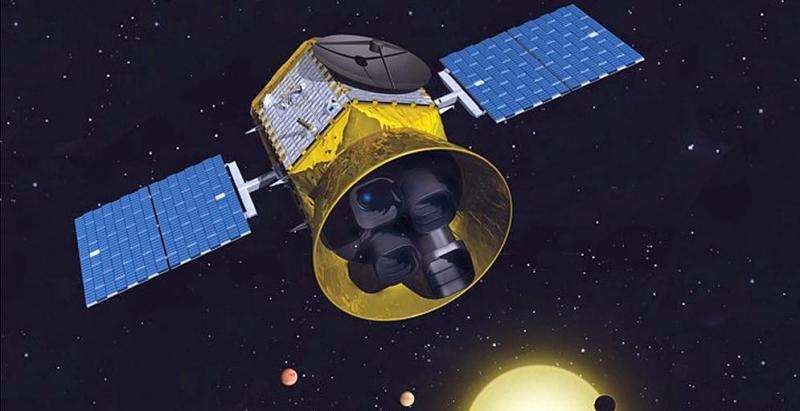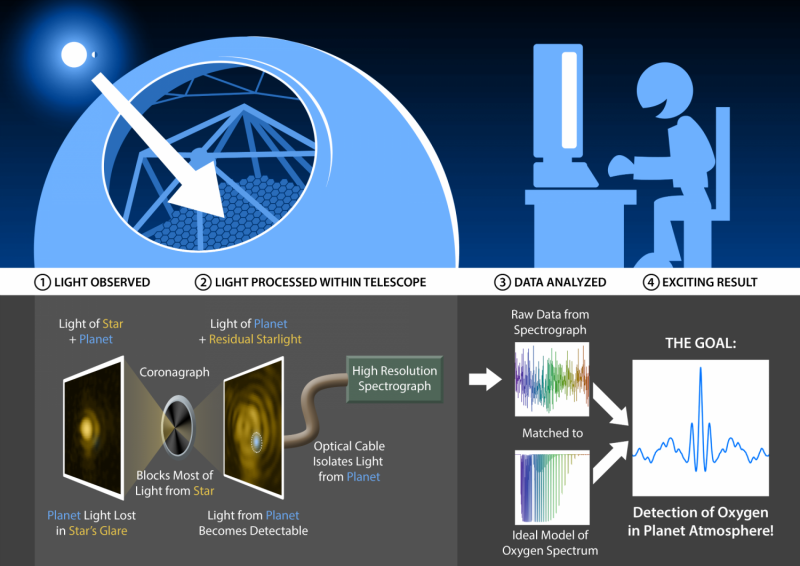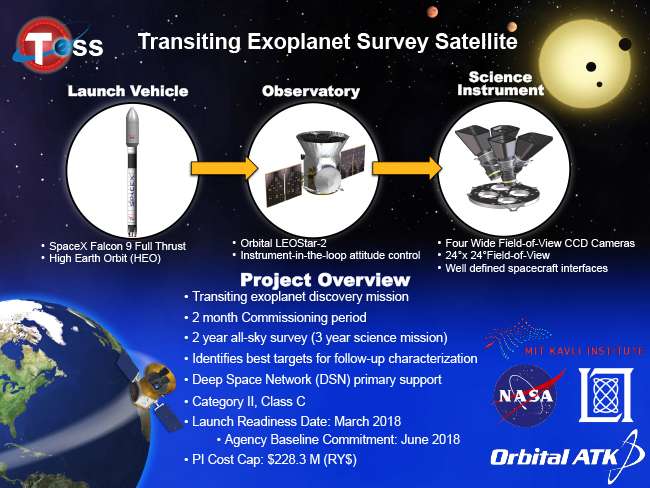Next breakthroughs in exoplanet discovery

It was a good week for astrobiology. Within days of NASA's announcement that the necessary ingredients for life exist in the plumes erupting from the southern pole of Saturn's moon Enceladus, scientists gathered at Stanford University to discuss discovering life outside the Solar System.
Noting how, "The search for life in the Universe has been transformed from speculation to a data-driven science," speakers like Stanford physicist Peter Michelson offered detailed plans for finding life on exoplanets. Over the course of two days on April 20-21, dozens of scientists attending the Breakthrough Discuss Conference contemplated options for exploring planets in other star systems. These option included using a new generation of powerful telescopes for long distance observations, as well as advancing a first-of-its-kind technology to visit other star systems—all within the next generation.
What these strategies had in common was a focus on observing habitable zone planets in our local stellar neighborhood. In this neighborhood alone, within 30 light-years or so of our solar system, astrobiologists have already identified several Earth-like exoplanets and dozens of systems that may harbor Earth-like worlds. These exoplanets, identified by the effect they have on their parent star, are rocky and roughly the same size and density as Earth. They orbit their stars at a distance that would allow liquid water to exist on the surface. There is, however, at least one major difference between our planet and these potentially-habitable exoplanets. That is, they aren't circling stars like our sun.
On the spectrum of stars, our sun is what's know as a yellow dwarf. It's bright, and not terribly large compared to the largest stars in our galaxy. Yet, even middling stars like our Sun aren't all that common. Our local stellar neighborhood -— and probably in the Universe as a whole -— is filled with many more low-mass stars. There are 20 yellow dwarf stars like our sun nearby and 250 M-dwarfs, a variety of star so small and dim that, despite their abundance, can't be seen with the naked eye. Over the last three-to-four years, every single low-mass star we've studied appears to have at least one planet. Usually, they have more than one.
"How common are planets orbiting low-mass stars? Very common indeed," explained Courtney Dressing, an astronomer at UC Berkeley to the assembled group. "For a typical M-Dwarf, there tends to be 2.5 planets. One-in-four of the stars has a planet the same size and temperature as Earth in the habitable zone."
Dressing's point was that given the number of M-dwarfs in the local region, there should be at least 60 potentially Earth-like planets in habitable zones within 32 or so light-years from here, and perhaps many more. To date, most of our exoplanet data comes from the Kepler spacecraft. The Kepler spacecraft has focused its search for planets on large M-dwarf stars. In the near future, when the small and medium-sized M-dwarfs are studied, we may discover that closer to one-in-three stars have an Earth-like planet in the habitable zone.

Apart from just being more abundant, studying the potentially-habitable exoplanets around these low mass stars comes with other advantages. These exoplanets have tight orbits around their stars because the habitable zones are close in, giving scientists opportunities to view their transits every few weeks. It is during these transits, when the exoplanets pass in front of their stars, that we have the best opportunity to study their atmospheres for signs of life. Many conference attendees, including Mercedes López-Morales from the Harvard Center for Astrophysics, explained how we will be surveying the atmospheres of the closest habitable zone planets for signs of life dwelling on the surface or in an ocean. "We're going to look for oxygen," she said.
Because the rise of oxygen in Earth's atmosphere corresponded with the appearance of life, we frequently use that particular molecule as a marker for the presence of life elsewhere. Also, oxygen likes to interact with other chemicals. If we discover a planet where oxygen is still hanging around in the atmosphere, something, possibly life, is actively making it. So, the search for life will focus on elements and molecules like hydrogen, oxygen, and methane. However, as López-Morales explained, there is a downside to this approach.
"A planet's atmosphere is only 1 percent the size of the planet. The size of the signal is tiny. You need to collect at least one trillion photons to be very certain that you are truly looking at oxygen."
The good news is that a new generation of telescopes designed for planetary exploration and astrobiology will be coming online to help us gather those photons. Around this time next year, the Transiting Exoplanet Survey Satellite (TESS) will be readying for launch. During its two-year mission, TESS will survey 200,000 stars, including the brighter ones in our local systems. The Giant Magellan Telescope (GMT) in Chile, slated to be operational by 2022, will have a resolving power 10 times greater than the Hubble Space Telescope. The GMT will feature a device called the G-CLEF spectrograph, which will be able to see molecules like oxygen in far-off planetary atmospheres. Finally, when the Extremely Large Telescope (ELT) opens in 2024, it will have more light-gathering-power than of Earth's current 8 to 10 meter telescopes combined. Astrobiologists are counting on these large telescopes coming online between now and 2024 to identify the prime candidates to look for oxygen and life in our stellar neighborhood.
Even as we anticipate a treasure trove of atmospheric data from these missions, scientists are discovering species that live quite happily without oxygen, light, and other features that we used to believe were required for life. These discoveries highlight how atmospheric bio-signatures like oxygen are an imperfect, if tantalizing, way to look for life from afar. The question then becomes: Could there be there another way to look for extraterrestrial life beyond studying exoplanet atmospheres?
Ideally, to definitively identify life on other worlds, we would visit nearby planets like Proxima b, only 4 light-years away, either in person or with a spacecraft. This is the goal of the Breakthrough's Starshot initiative. Announced a little more than a year ago, Starshot's goal, according to its founder, is to "literally reach the stars in our lifetimes." The plan to accomplish this feat involves launching a fleet of very small spacecraft. Starshot will then accelerate those craft to as close to lightspeed as possible. By aiming high-powered lasers at these gram-sized cameras in space we may be able to cut down the time, cost, and weight required to gain an up- close look at planets around other stars.

"The goal is to fly a probe very close to a planet and figure out if it has life," said Avi Loeb, a physicist at the Harvard Smithsonian Center for Astrophysics. "What is the color of the planet? Is it green? Does it have vegetation? Is it blue, are there oceans? Or is it desert-like?"
At the conference, NASA engineer Ruslan Belikov premiered simulations of what an exoplanet might look like from Starshot's point of view. Even if the craft were moving at 90 percent the speed of light, the onboard cameras should still be able to pick up signs of large oceans, clouds, and land masses that an exoplanet might have.
The hope is that someday, by combining laser acceleration of these very small craft with cameras and other sensors, we might finally be able to take a firsthand look at habitable-zone-planets circling nearby stars, and in doing, perhaps definitively find life elsewhere in the Universe. Combining data from our new generation of very large telescopes with atmospheric observations of nearby exoplanets around M-dwarfs may help us choose the best targets for small Starshot craft flyby.
"We are going to be the generation that is remembered for finding exoplanets. That's a fact," said López-Morales. "Are we going to be also the generation that will be remembered as the first ones who found life on those planets?"
That, indeed, would be the breakthrough of a lifetime.
Source: Astrobio.net
This story is republished courtesy of NASA's Astrobiology Magazine. Explore the Earth and beyond at www.astrobio.net .



















